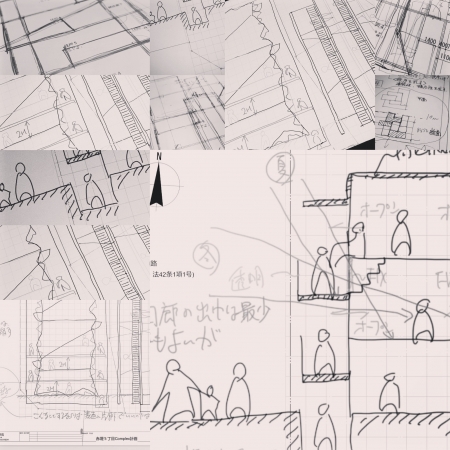言葉で未知を引っ張り出そうと
言葉をイメージより先にしている、それはイメージは既知のものしかできないような気がして。
どうしても、無意識のうちに、過去に見た建築に類型化してしまう。
「これは、あの建築の考え方の延長にあるな」
「この建築は面白いけれど、プランはあの建築にそっくりだな」
「明らかに、真似しているよね」
などなど、結構、類型化するのは案外簡単なこと。
ただ、そのおかげで、自分で計画中に真似を意識してしまう。
建築の設計をしている最大の理由は、未知の空間を見たいから、瞬時にあの建築と同じはできない。
そのイメージを乗り越える手段として言葉を利用している。言葉はイメージを伴わなくても表現できると勝手に思い込んでいるのと、言葉に引っ張られてイメージが出てくると考えているから。
ただ、ここに来て、言葉に引っ張られてイメージは出てくるのだが、現実が伴わない。イメージ通りの空間に到達しないのだ、未知だから仕方がないのかもしれないが、どうしたものか。
"Let's pull out the unknown with words"
I have words before the image, it feels like the image can only be known.
By any means, they unknowingly typify the architecture seen in the past.
"This is an extension of that architectural idea."
"This architecture is interesting, but the plan is just like that."
"Obviously, you are imitating"
And so on, it is quite easy to type out.
However, thanks to that, you will be aware of imitation while planning on your own.
The biggest reason I'm designing architecture is because I want to see an unknown space, so I can't do the same with that architecture in an instant.
I use words as a means to overcome that image. I believe that words can be expressed without an image, and I think that an image will be drawn by the words.
However, I came here, pulled by words, and an image came out, but reality does not accompany it. It does not reach the space as the image, it may not be possible because it is unknown, but what happened?

